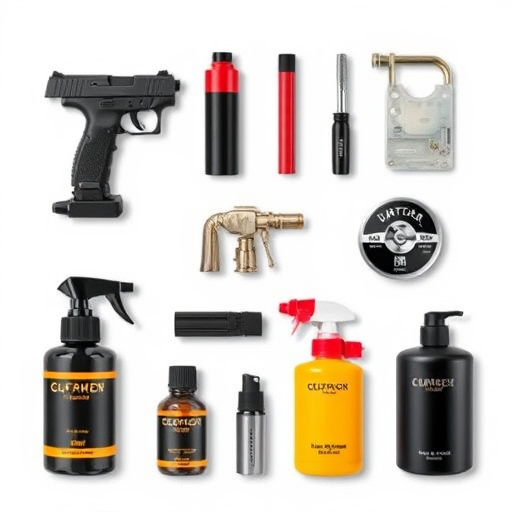Self-defense and security products, such as personal alarms, pepper spray, and tasers, offer immediate protection against attackers, complementing awareness and de-escalation skills. Pepper spray is a popular choice for its temporary disability through sensory disruption, but range and wind conditions must be considered. Personal alarms are compact, powerful tools that deter attackers and draw help. Exploring these tools empowers individuals to protect themselves in diverse scenarios while understanding local laws is crucial to responsible deployment.
Staying safe is a top priority, and understanding the world of self-defense and security products can empower individuals to protect themselves. This comprehensive guide explores various tools designed to enhance personal safety, from non-lethal sprays to powerful alarms and physical defenses. We’ll delve into their effectiveness, legal aspects, and practical application, ensuring you’re equipped with knowledge in an ever-changing world. Discover the best self-defense and security products to suit your needs and budget.
Understanding Self-Defense and Security Products
Self-defense and security products are essential tools for individuals seeking to protect themselves in various situations. These items are designed to provide a sense of security, empower users, and deter potential threats. Understanding what constitutes a self-defense tool is crucial; it goes beyond physical objects and encompasses knowledge, awareness, and strategies to navigate potentially dangerous scenarios.
Security products, such as personal alarms, pepper spray, and tasers, offer immediate protection against attackers. They are easy to carry and can be used effectively in emergency situations. Moreover, self-defense training and awareness classes teach individuals how to recognize potential risks, de-escalate conflicts, and defend themselves using physical techniques and mental strategies. Combining these tools with a proactive mindset creates a comprehensive approach to personal safety and security.
Types of Self-Defense Sprays and Their Effectiveness
Self-defense sprays are a popular choice among individuals seeking effective personal security products. These non-lethal weapons come in various forms, each with unique features and levels of protection. The most common types include pepper spray and CS gas (chemically-indexed spray), which are designed to temporarily disable an attacker by causing intense irritation and reduced visibility. Pepper spray, in particular, has gained popularity due to its availability and effectiveness at creating a safe escape path.
The effectiveness of these sprays lies in their ability to disrupt an assailant’s senses, providing crucial time for the user to retreat or call for help. However, it’s essential to consider factors like range, wind conditions, and the attacker’s resistance. Some advanced models feature long-range options, while others have added features like UV markers to track attackers’ clothing. Additionally, proper training in spray usage is vital to ensure its effectiveness in high-stress situations.
The Role of Personal Alarms in Ensuring Safety
Personal alarms are compact, powerful tools that belong in every self-defense arsenal. These devices emit loud, attention-grabbing sounds, effectively deterring potential attackers and drawing help when needed. They’re easy to carry—often fitting comfortably on a keychain or in a purse—and can be quickly activated with just one touch, making them convenient and effective self defense and security products for anyone facing an unexpected threat.
Whether you’re walking alone at night or in remote areas, a personal alarm can serve as a powerful deterrent, signaling to passersby or nearby emergency services that you need assistance. Many modern models also incorporate flashing lights, further enhancing their visibility and impact, ensuring your safety across various scenarios.
Exploring Physical Self-Defense Tools for Women (and Men)
For those seeking to enhance their personal safety and security, exploring physical self-defense tools is a proactive step worth considering. These tools are designed to empower individuals, especially women, by providing them with means to protect themselves in various situations. From pepper spray canisters to stun guns and personal alarm devices, the market offers a range of options tailored to different needs and preferences.
Choosing the right self-defense and security product involves understanding one’s environment and potential threats. Pepper spray, for instance, is effective for creating distance from an attacker by causing temporary blindness and irritation. Stun guns, on the other hand, deliver powerful electric shocks, temporarily incapacitating the user. Additionally, personal alarms are compact devices that emit loud sounds to startle assailants and alert others nearby. Incorporating these tools into one’s safety routine can boost confidence and ensure a sense of security while navigating potentially dangerous scenarios.
Legal Considerations and Usage Guidelines for Self-Defense Items
When considering self-defense items, it’s crucial to understand the legal landscape surrounding their use. The legality and guidelines for carrying and utilizing self-defense products vary significantly from one region to another. What may be permitted in one country or state could be heavily regulated or outright banned in another. For instance, pepper spray is a common self-defense item, but its use is often restricted to specific situations and distances to avoid injury to bystanders.
Security products designed for personal protection must be used responsibly and within the bounds of the law. This includes understanding when and where it’s appropriate to deploy them. Training in the safe handling and usage of self-defense tools is essential, as improper use could lead to unforeseen consequences or legal repercussions. Staying informed about local laws and seeking guidance from authorities can help ensure that your choice of self-defense items enhance your security without crossing into unlawful territory.
